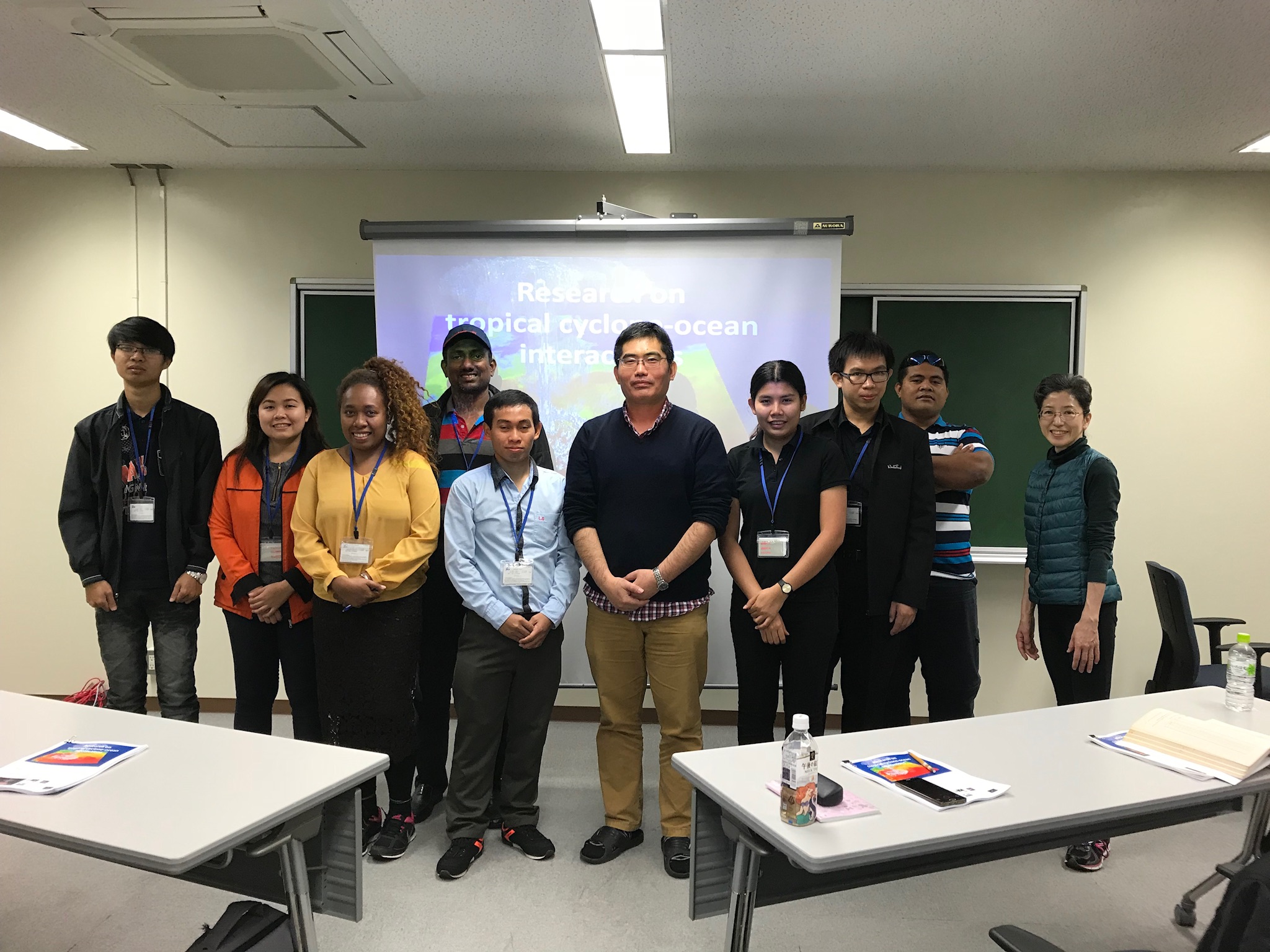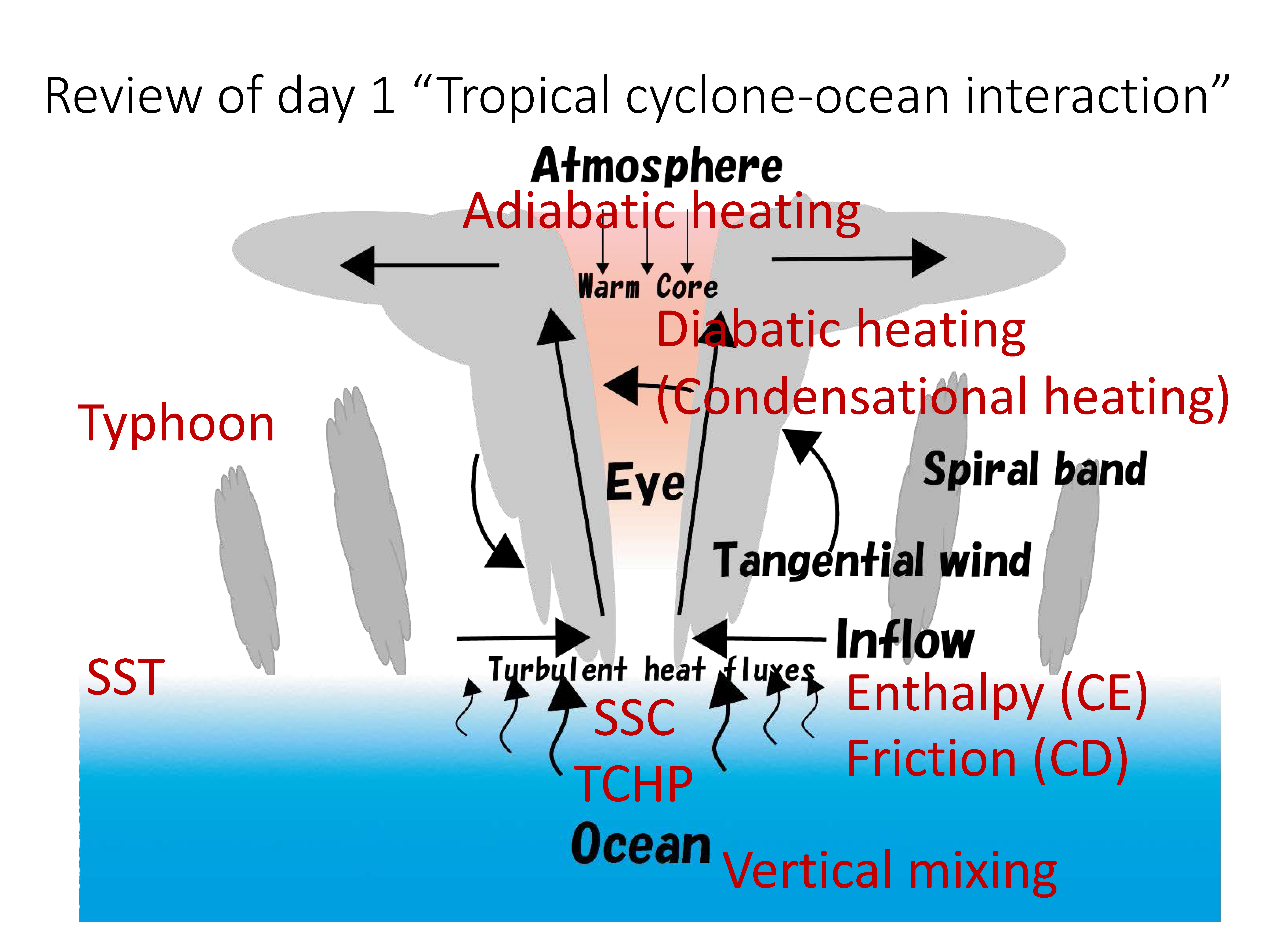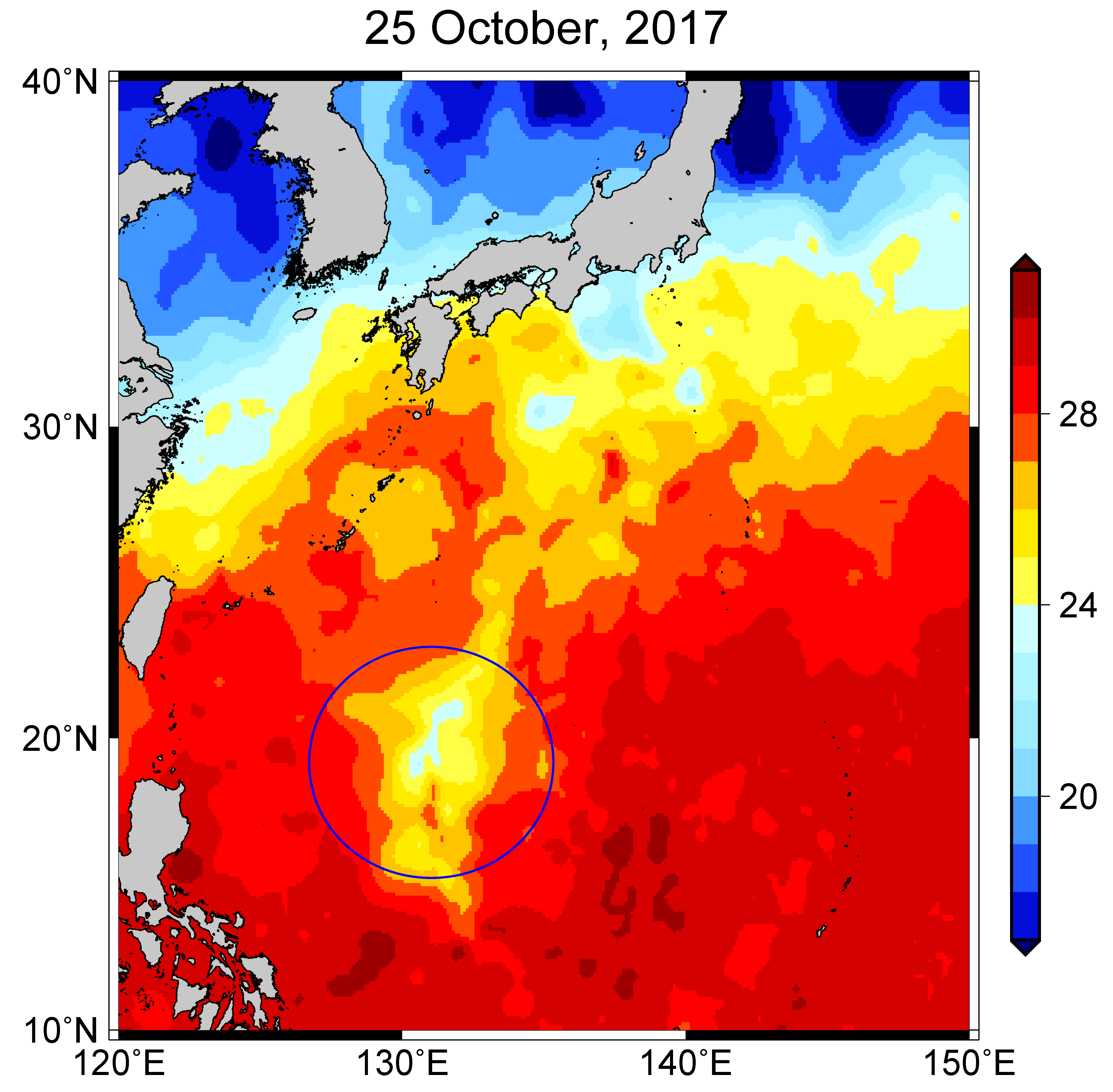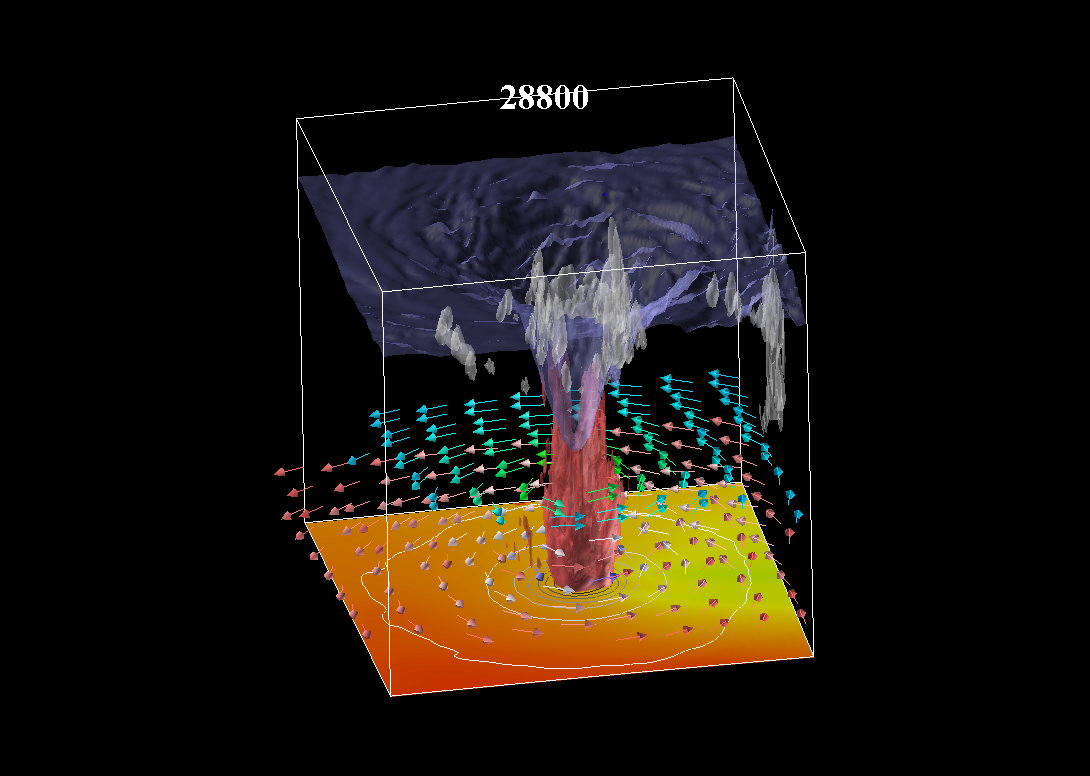Research on tropical cyclone-ocean interactions

We introduced research on tropical cyclone-ocean interactions, including
an introduction of air-sea interactions,
the ocean response to tropical cyclones,
tropical cyclone heat potential and its application to tropical cyclone intensity forecasts,
numerical simulations with an atmosphere-wave-ocean coupled model,
the development of regional atmosphere-ocean coupled system for improving tropical cyclone analysis and prediction.
First day
An introduction of tropical cyclone
An introduction of sea surface temperture
Drag and enthalpy coefficients
Turbulent mixing in the upper ocean
---Commentary of Typhoon LAN---
The ocean response to a moving storm
Tropical cyclone heat potential

This panel is a summary of the lecture on 25 October, 2017. In addition, We showed a preliminary result of numerical simulations by the atmosphere-wave-ocean coupled model (day 2) regarding Typhoon Lan. However, the result of numerical simulations was poor particularly at the rapid intensification phase.
Second day
Supercomputer system of Meteorological Research Institute
---Commentary of Typhoon SAOLA---

The blue circle shows the region of sea surface cooling induced by Typhoon Lan. Because the track forecast of Typhoon Saola was the track passing over the cold wake, we anticipated at this time that the intensity forecast of Saola was not going to become strong.
Physical process modeling at the air-sea interface
Numerical simulations with an atmosphere-ocean coupled model
Numerical simulations with an atmosphere-wave-ocean coupled model

The results of numerical simulation on Haiyan by the atmosphere-wave-ocean coupled model. The panel shows sea surface temperature (shades), sea-level pressures (contour), lower-to-mid tropospheric flows (arrows), relavive vorticity(red), cloud ice (transparentd white) and isotherm in the upper layer (Purple). Haiyan had a small size with the fast translation. Haiyan was small and traveled relatively fast.
The development of regional atmosphere-ocean coupled system




